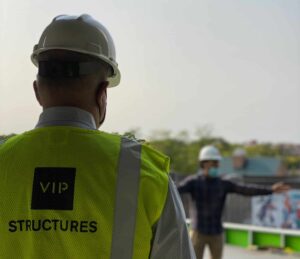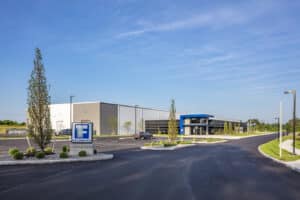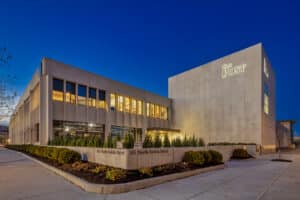Last year, we wrote about Office Space Design Throughout the Years and how the environment might be impacting our productivity. We looked at the Scientific Method of the first half of the 20th Century, which was all about increasing efficiency and applying an industrial engineering type of approach to all operations in an organization, including the growing amount of office-based clerical work that was emerging in the era.
The 1950s – 1960s was an era rich with new ideas and a time when modernism was becoming more mainstream and a tad more sophisticated portrayed in the many episodes of Mad Man and Don Draper Paradise. Spaces outside of the posh offices had an open floor plan, filled with filing cabinets and plants, which often served as dividers.
Workspace design from the 1970s to 1990s was known as the “Cube Farm,” were modern offices were outfitted with traditional desks and 6’ tall cubicles dotted individual workspaces. Cubicles were “a logical adaptation to the lack of privacy in the open office floorplan of the previous era.”
Although the “Cube Farm” still exists, many office environments have experienced a design shift brought about by how people want to interact and collaborate within the workspace. Innovation Centers were being rolled out as companies like BNY Mellon and many high-tech firms in Silicon Valley. The work environment today is seen as a place where social interaction and connectivity is paramount. Instead of cubicle spaces, offices are outfitted with open and shared work areas, breakout spaces, lounge areas, individual pods, and even fun zones with a modern cafeteria setting.
At the start of this year, office design trends were holding to creating dynamic spaces within an open-air environment mixing modern-day furniture with rustic building elements. All of this made possible through the advancements in technology and software that allows for collaboration and engagement anywhere within the built environment.
Fast forward, and we are now hyper-focused on employee and customer health and safety, as we are adjusting to a new normal amid COVID-19. As designers, we are finding new and necessary ways to adjust our designs to ensure safe interactions as well as clean air. We must realize that the old and familiar workspace design may not be possible anymore.
The question being asked today – is the open-concept design on its way out?
In the United States, open-plan set-ups are standard in about 70% of office workplaces. Going back to work, now, is going to feel very different than when we left. Unsurprisingly, many will be stepping away from open-plan workspaces and returning to private offices and cubicles. Offices will now include hygiene stations, route direction, health screening points, reduced seating within conference rooms and meeting spaces, and new HVAC systems. Environments that are still looking to maintain an open-concept floor plan will require designers to look to innovative ways to create partitions without creating barriers.
Commercial Real Estate Firm, Cushman & Wakefield, has created a new design, the Six Feet Office. The Six Feet Office will encourage the six-foot distance rule in the transformation of offices.
Here are a couple of ways office spaces could change.
Augmented Reality Workstations
Augmented Reality Workstations are virtual screens that float in the air, allowing people to resize. Augmented Reality can be used to strengthen remote collaboration efforts. This will enable co-workers to collaborate in virtual meeting rooms.
Signs
Imagine running on a track, but now you are in the office. Signs will encourage employees to walk in one direction, which will minimize interaction between co-workers. This can include instructions, reminders, handwashing, and social distancing signs.
Contactless Technology
Contactless Technology may include automating touchpoints at elevators and doors, through motion sensors. While the implementation of smart office technology may be costly, employees will feel safer coming back to the office.
HVAC
How can we ensure everyone is breathing clean and fresh air? A critical component of new designs will be HVAC systems and how air quality can be improved. “HVAC filters, along with other strategies, help to reduce virus transmission while removing other air contaminants that may have health effects.” Employers should increase outdoor air ventilation, improve central air filtration, keep systems running for long hours, and consider Intellipure room air purification systems by Healthway.



